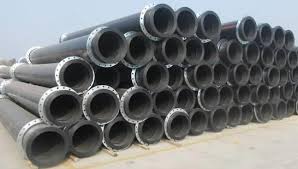Jul . 26, 2024 19:30 Back to list
Innovative HDPE Pipe Solutions for Efficient Water Supply Systems in China
The Role of HDPE Pipes in China's Water Supply Infrastructure
In the quest for sustainable and efficient water supply systems, China's reliance on advanced materials has led to the widespread adoption of High-Density Polyethylene (HDPE) pipes. With the country's rapid urbanization and increasing population, the need for reliable water distribution networks has never been more critical. This article explores the significance of HDPE pipes in enhancing China's water supply infrastructure.
HDPE pipes are known for their exceptional durability, flexibility, and resistance to corrosion. These properties make them an ideal choice for various applications, particularly in challenging environments. In China, where water transport systems face several challenges—such as soil movement, chemical exposure, and temperature fluctuations—HDPE pipes offer a robust solution. Unlike traditional materials like metal or concrete, HDPE pipes do not corrode, which extends their lifespan and reduces maintenance costs.
The Role of HDPE Pipes in China's Water Supply Infrastructure
Moreover, HDPE pipes are lightweight and easy to install, which significantly reduces labor and transportation costs. The installation process is often quicker compared to other materials, leading to savings in both time and resources. This is particularly important in areas where rapid deployment of water supply infrastructure is necessary to meet the demands of growing urban populations. As cities expand and rural areas develop, the efficiency of HDPE pipes ensures that water distribution can keep pace with growth.
china water supply hdpe pipe

In response to global environmental concerns, HDPE pipes also present a more sustainable option for water supply systems. They are recyclable and can be produced using environmentally friendly practices. The reduced energy consumption during their production compared to conventional piping materials contributes to lower greenhouse gas emissions. As China continues to strengthen its commitment to environmental protection and sustainable development, the adoption of HDPE pipes aligns with national goals.
Furthermore, HDPE's resistance to biofouling and chemicals makes it suitable for carrying potable water, ensuring that the supply remains clean and safe for consumption. This is particularly significant in urban areas where contamination can be a concern. The use of HDPE pipes helps safeguard public health by minimizing the risk of leakage and contamination during the water distribution process.
Recent advancements in technology have further enhanced the capabilities of HDPE pipes. For example, the development of fusion welding techniques allows for seamless joints, significantly reducing the risk of leaks. Additionally, innovations in monitoring and maintenance technologies are improving the overall efficiency of water supply networks. By leveraging these advancements, China can ensure that its water supply systems are not only efficient but also resilient to future challenges.
In conclusion, HDPE pipes are integral to modernizing China’s water supply infrastructure. Their durability, flexibility, and environmental benefits make them a preferred choice for addressing the country’s water distribution needs. As China continues to face the pressures of urbanization and climate change, the responsible use of materials like HDPE will be crucial in building a sustainable and efficient water supply system for future generations. As this trend continues, it offers a promising outlook for both the environment and public health in China.
-
High-Quality PVC Borehole Pipes Durable & Versatile Pipe Solutions
NewsJul.08,2025
-
High-Quality PVC Perforated Pipes for Efficient Drainage Leading Manufacturers & Factories
NewsJul.08,2025
-
High-Quality PVC Borehole Pipes Durable Pipe Solutions by Leading Manufacturer
NewsJul.08,2025
-
High-Quality PVC Borehole Pipes Reliable PVC Pipe Manufacturer Solutions
NewsJul.07,2025
-
High-Quality UPVC Drain Pipes Durable HDPE & Drain Pipe Solutions
NewsJul.07,2025
-
High-Quality Conduit Pipes & HDPE Conduit Fittings Manufacturer Reliable Factory Supply
NewsJul.06,2025

